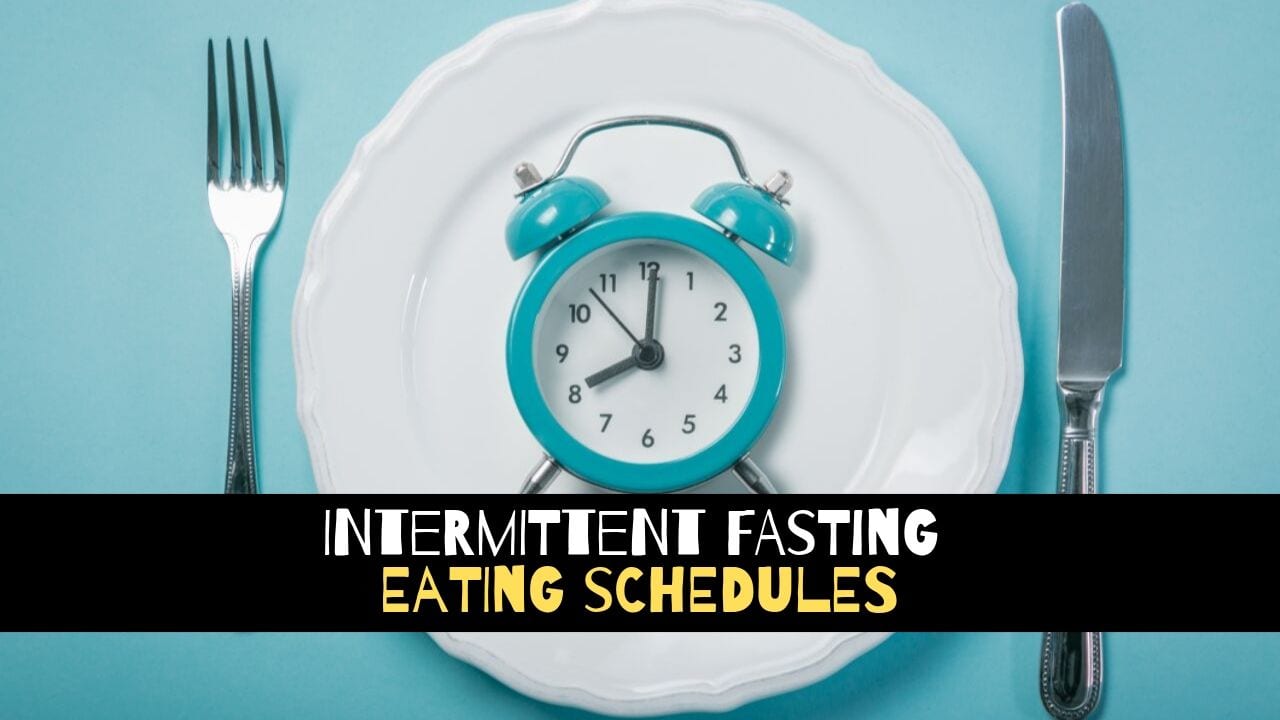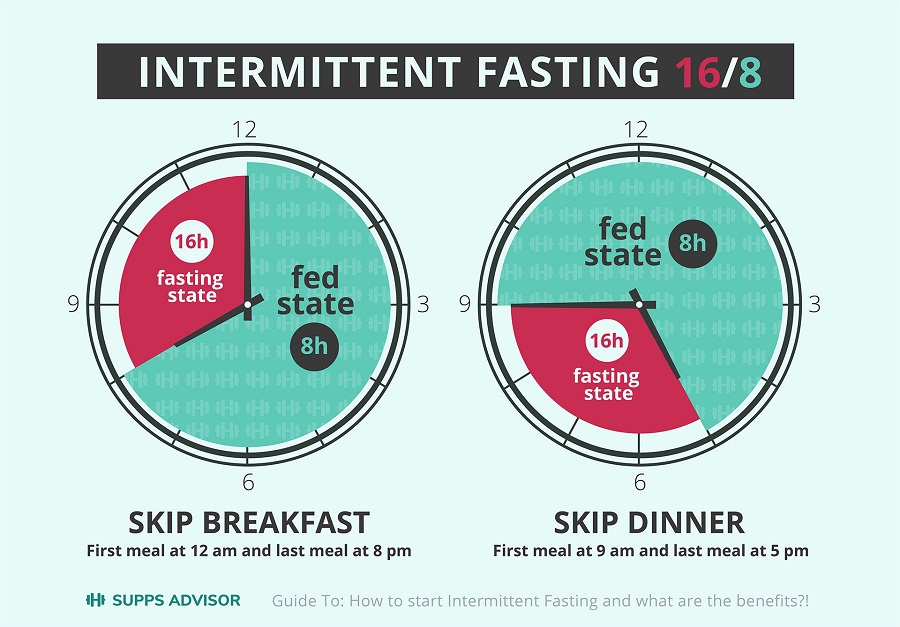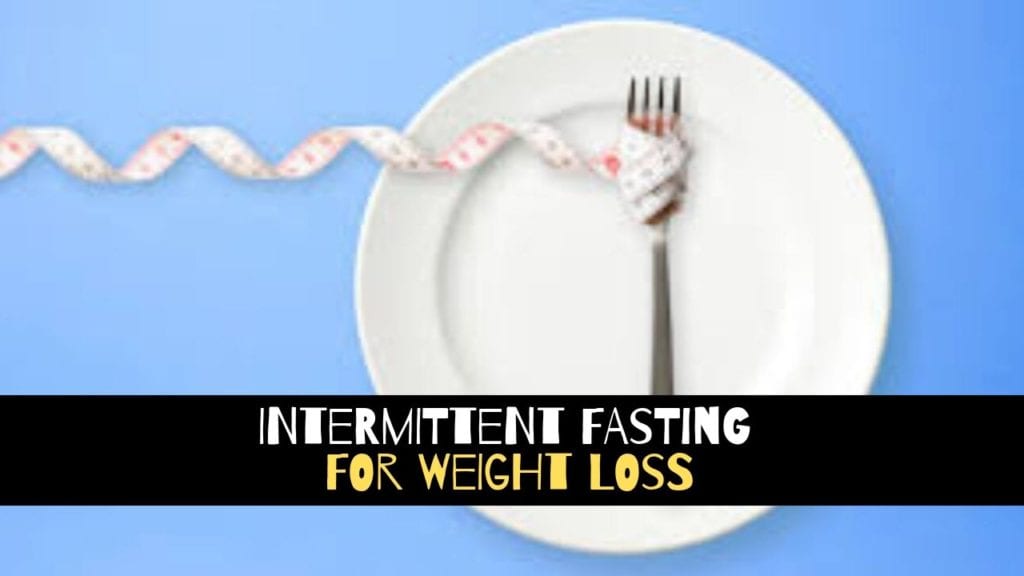Intermittent Fasting is all the rage these days, but what many people don’t realize is that Intermittent Fasting diet plans are not one size fits all – and that’s a GOOD thing. In this article, we’ll discuss the most popular types of intermittent fasting schedules. Hopefully you’ll find an intermittent fasting eating plan that works for you so you can benefit from this amazing lifestyle.
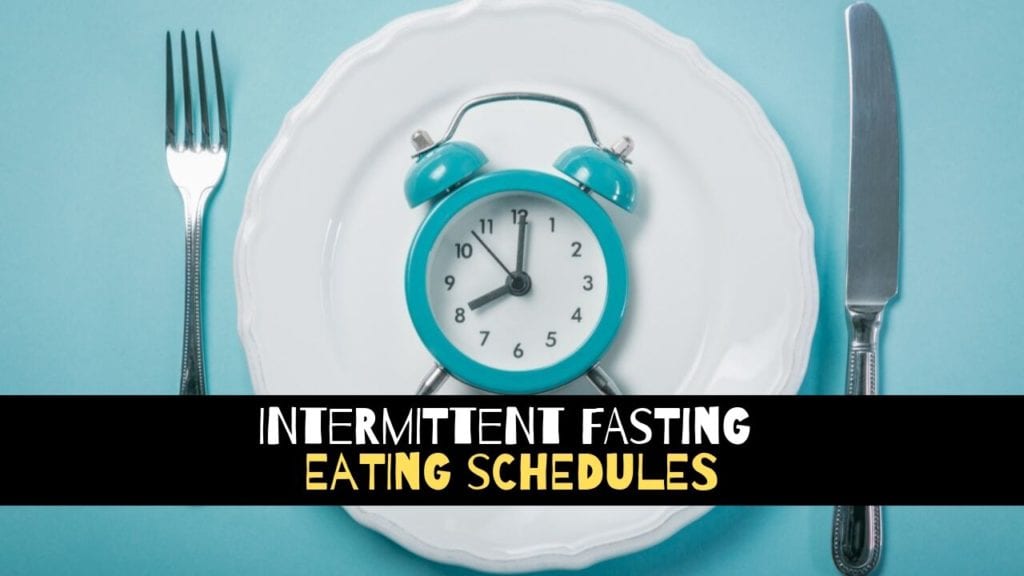
Editor’s Note: This article is part of a series on Intermittent Fasting.

Hi, I’m Mike, That Helpful Dad. I’ve been living the Intermittent Fasting lifestyle for about 2 years now and it’s changed my life for the better. I hope it can help you too.
What is Intermittent Fasting?
Intermittent fasting is a catch-all term for lifestyle diets in which someone doesn’t eat for a preset period of time (the fasting state) and does eat during a preset period of time (the fed state).
Why would someone want to do that?
Most people choose to try intermittent fasting because it helps with weight loss. However there are are a number of benefits to Intermittent Fasting too.
For the purposes of THIS article, we’re going to assume you’ve already bought in to the benefits of intermittent fasting and are really just looking to better understand what the options are for intermittent fasting eating schedules.
Most Popular Intermittent Fasting Schedules
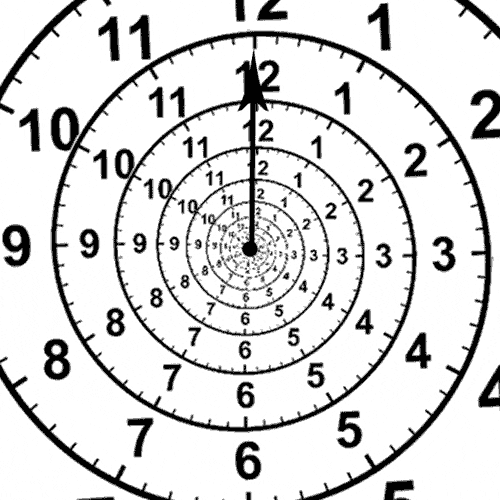
Depending on who you ask, if you research the types of intermittent fasting, you’re likely to see anywhere from 4 types of intermittent fasting, to 6 intermittent fasting diets, to 7 ways to try intermittent fasting, to even 15 different variations of intermittent fasting. Wow, who knew?
I’m not here to judge what is and what isn’t really intermittent fasting – maybe there are really 15 different types or maybe there’s even more. After all the definition of Intermittent Fasting is pretty wide open to interpretation (a period of fasting vs a period of fed) so perhaps some of the lesser known types of intermittent fasting like Circadian Rhythm Fasting, Dry Fasting, and Fat Fasting qualify. But for our goals today, I’m going to draw your attention to the most popular types of intermittent fasting schedules since I’m assuming you’re likely to be pretty new to the concept. If that’s the case, then you’ll want to set yourself up for success by trying some of the tried and true methods of intermittent fasting eating plans that have been proven to work for many people (myself included).
I. Time Restricted Feeding (16/8, 14/10, 12/12)
Although I have no concrete evidence on this, I’m going to say that time restricted feeding is the most popular type of intermittent fasting eating schedule. I say this because it’s the most common type of intermittent fasting I hear people talking about in the real world. It’s also the version of IF that I follow and I’d like to be in the popular crowd so there’s that too. 🙂
Here are the most popular variations of time restricted intermittent fasting.
- 16/8 Intermittent Fasting means you don’t eat for 16 hours, and you eat all your food within an 8 hour window (fed). (This is the version most recommended for men).
- 14/10 intermittent fasting means you don’t eat for 14 hours, and you eat all your food within a 10 hour window. (This is the version most recommended for women).
- 12/12 intermittent fasting means you don’t eat for 12 hours, and you eat all your food within a 12 hour window. (This is more of a starting version to build from).
Time restricted feeding is a really easy way to start intermittent fasting. Basically you don’t eat snacks after dinner and/or you skip breakfast. Consider what this looks like:
- I practice 16/8 intermittent fasting so I try to stop eating around 6pm and then I don’t start eating until around 10am the next day.
- If you do 14/8 IF and stop eating around 6pm, you can start again the next day at 8am. That’s easy.
- And 12/12 IF is even easier. Stop eating around 7pm and start again at 7am. Easy-peesie. (Note: 12/12 IF is also called “Overnight Fasting”).
I’ve been practicing 16/8 intermittent fasting for around 2 years – read my results in this article.
What I love about 16/8 IF is that it’s a diet you can easily do every day, without feeling like you’re missing out or starving yourself. And because it’s so easy, it becomes a lifestyle you WANT to live.
You can learn more about Time Restricted Eating here:
- Book: Intermittent Fasting 16/8: The 16:8 Method Step by Step to Lose Weight
- Healthline: Time Restricted Eating Beginner’s Guide
- Medical News Today: Time Restricted Eating for Weight Loss
- Today: Time Restricted Fasting Schedule Plan
- Book: Intermittent Fasting for Beginners: The Ultimate Weight Loss Guide incl. 5:2 Diet, 16:8 Diet and 30 Days Diet Plan
- MSN Lifestyle Mag: Everything You Ever Wanted to Know About the 16:8 Intermittent Fasting Diet
II. Eat, Stop, Eat Fasting (OMAD, 24 Hours, etc)
Moving on to a bit more advanced fasting. Within the Eat-Stop-Eat Fasting, you typically hear people talk about the following:
- OMAD – This means “One Meal a Day” – most people define this as fasting for 23 hours and eating all your food in a 1 hour period. So this could also be called 23/1 Fasting.
- 24 Hour Fasting – basically you eat normally (as you define it) one day, fast an entire day, and then eat normally again. Then repeat.
- Also called “Whole Day Fasting”
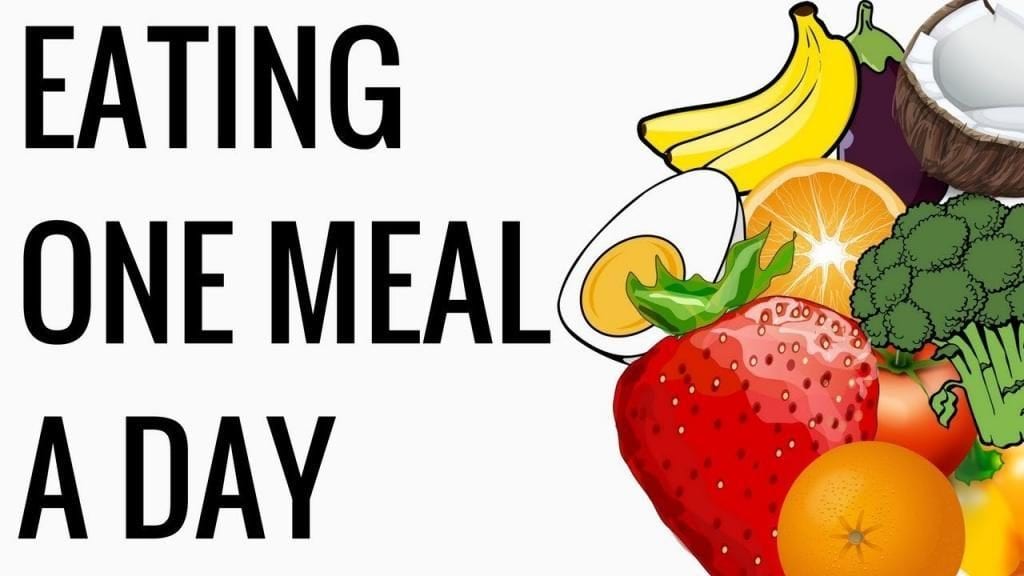
Those I know who practice this type of Eat-Stop-Eat Fasting love it. HOWEVER I don’t know anyone who does this consistently ever day. Usually I’ll hear people say they do this 2-3 times a week.
That said, people who practice this type of fasting often proclaim the cleansing benefits of this lifestyle.
You can learn more about Eat-Stop-Eat Fasting here:
- Book: Eat Stop Eat for Weight Loss and Health
- Livestrong: How Eat Stop Eat Fasting Works
- Womens Health: What You Need to Know about Eat Stop Eat Fasting
- Health.com: What is OMAD?
- Bulletproof.com: Should you try OMAD Diet?
- Book: One Meal a Day: A Scientific Method for quick and healthy weight loss
- Carnivore Aurelius: 10 Reasons to Try OMAD
III. The 5-2 Method of Intermittent Fasting
Not to be confused with Eat-Stop-Eat fasting, 5:2 Intermittent Fasting is a different animal. With 5/2 Fasting you’ll be trying to limit your total daily calorie intake to only 500 calories for TWO DAYS during the week. The other 5 days you’ll be eating your typical (hopefully healthy) diet.
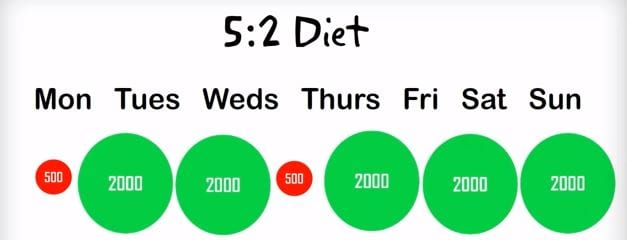
Most people who do 5:2 Intermittent Fasting will eat a 200 calorie meal and a 300 calorie meal and they’ll try to eat high-fiber, high-protein foods.
5:2 Fasting is also called Twice a Week Fasting.
A variation of 5/2 Fasting is Alternate Day Fasting (500 calories every other day) but the latter, while successful for losing weight, has proven to be hard to stick with over the long term for some people.
To learn more about 5:2 Intermittent Fasting or Alternate Day Fasting, check out these links:
- Book: Intermittent Fasting for Beginners: The Ultimate Weight Loss Guide incl. 5:2 Diet, 16:8 Diet and 30 Days Diet Plan
- Healthline: Beginner’s Guide to the 5:2 Diet
- Medical News Today: How to do the 5:2 Diet
- Book: The Every-Other-Day Diet: The Diet That Lets You Eat All You Want (Half the Time) and Keep the Weight Off
- Healthline: Alternate Day Fasting Guide
- Book: The 5:2 Diet: Feast for 5 Days, Fast for 2 Days to Lose Weight and Revitalize Your Health
- Book: The FastDiet: Lose Weight, Stay Healthy, and Live Longer with the Simple Secret of Intermittent Fasting (over 2,000 reviews for this book!)
IV. The Warrior Diet

Whether it’s good marketing or something more, the Warrior Diet version of Intermittent Fasting has gained lots of popularity recently. As noted on Medical News Today, “supporters of the Warrior Diet claim that humans are natural nocturnal eaters and that eating at night allows the body to gain nutrients in line with its circadian rhythms.”
Although it sounds hard – it’s proclaimed as a 20/4 Intermittent Fasting where you eat little to no food for 20 hours and then eat one large meal at night during a 4-hour window.
That said, the Warrior Diet isn’t really a time restricted diet (if we define time restricted fasting as a period of NOT eating followed by a period of eating), because during the 20-hour ‘fasting’ window of the Warrior Diet you’re allowed to eat minimal amounts of raw fruits and vegetables.
While I am not here to say if the Warrior Diet is a true version of Intermittent Fasting, the fact is that most people do define it as an Intermittent Fasting Schedule so we’ll include it here too.
More importantly though, if you choose to follow the Warrior Diet Fasting plan, you may want to read more about the science behind Intermittent Fasting in general – especially if your goal is to use intermittent fasting for weight loss because if you eat more than 50 calories during the 20 hour ‘fasting’ window you MAY not stay in the ‘fasting state’ as effectively as you do with other forms of intermittent fasting (see the science behind the fasting state benefits of intermittent fasting here).
To learn more about the Warrior Diet, check out these links:
- Book: The Warrior Diet: Switch on Your Biological Powerhouse For High Energy, Explosive Strength, and a Leaner, Harder Body
- Very Well Fit: What is the Warrior Diet?
- Healthline: Warrior Diet Review and Beginner’s Guide
- Reader’s Digest: 7 Things to Know about the Warrior Diet
- Livestrong: How to start the Warrior Diet
V. Extended Fasting (Multiple Day Intermittent Fasting)
Not for the feint of heart (and not for beginners of IF), Extended Day Fasting is pretty much what the name implies:
- 36 Hour Fasting
- 48 Hour Fasting
- 3-7 Day Fasting

All these forms of intermittent fasting schedules are more extreme versions of the IF diet. There’s a boatload of evidence that people point to as the cleansing benefits of these types of intermittent fasting variations but you’ll need to graduate to this level of fasting if you want to set yourself up for success.
To learn more about Extending Day Intermittent Fasting, read these articles:
- Book: Fasting: The Ultimate Guide to Intermittent, Alternate-Day, and Extended Water Fasting and How to Activate Autophagy for Weight Loss and Anti-Aging
- Paleo Leap: Long Fasts
- Life Apps: What to Expect on a Long Fast
- Book: The Complete Guide to Fasting: Heal Your Body Through Intermittent, Alternate-Day, and Extended
Intermittent Fasting Schedules – The Bottom Line
There really is something for everybody when it comes to Intermittent Fasting Eating Schedules.
If you’re looking to get started, try one of the easier versions like 12/12 IF or 14/10 IF. All you really need to do is skip that after dinner snack.
Give it a try and let me know how it works.

